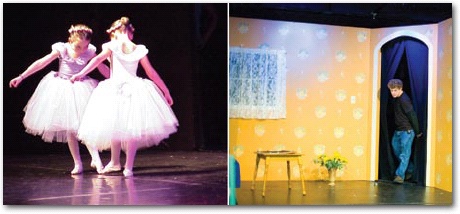Theater Shots
This one's really tricky; capturing stage performances is a tough job even for professionals. The chief problem is that the bright main light on the actors often shares the frame with a subdued or even darkened background. If you shoot in auto mode, then the camera brightens up the image enough to bring out details in the dominant dim backgroundâand turns the spotlighted actors into white-hot, irradiated ghosts.
Furthermore, the built-in flash is useless; in the audience, you're just too far away for it to do any good (unless you climb right up onto the stage, which is generally frowned upon). So for God's sake, turn your flash off at theater performancesâbecause it's annoying to the rest of the audience, because it's worthless, and because it's usually forbidden. Crank up the ISO, if necessary.

If you have a spot-metering mode (Exposure Compensation), you have a fighting chance. Instead of averaging the light in the entire scene, the camera measures the brightness of one particular spotâin this case, the brightly lit actors.
Not all cameras have a spot-metering mode. But even basic cameras generally offer some kind of exposure compensation, an overall brightness control (Exposure Compensation). Try lowering the exposure to â1 or â1.5, for example. That darkens the entire scene. The background will be too dark, of course, but at least the actors won't be "blown ...
Get David Pogue's Digital Photography: The Missing Manual now with the O’Reilly learning platform.
O’Reilly members experience books, live events, courses curated by job role, and more from O’Reilly and nearly 200 top publishers.

